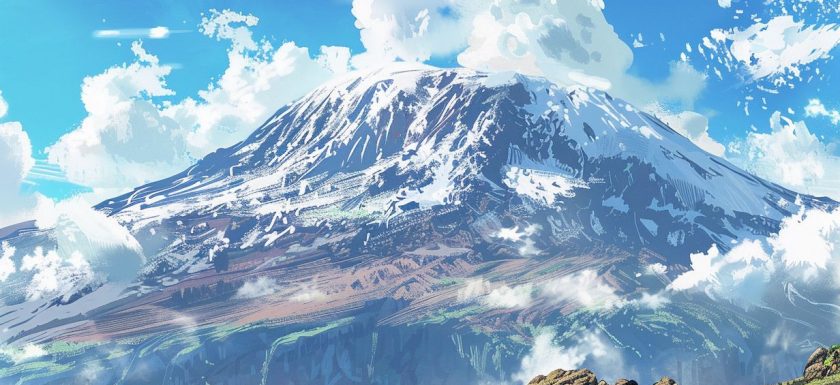
Mount Kilimanjaro, located in Tanzania, is renowned for its stunning beauty and ever-changing weather conditions.
This article will explore the geographical location of Mount Kilimanjaro and examine the climate, temperature, humidity, precipitation, wind speed and visibility on the mountain. We will also discuss the varying weather conditions on different parts of the mountain and the optimal time to visit.
Additionally, we will provide tips on precautions to take, how to prepare, and what to pack for the weather on Mount Kilimanjaro. Stay tuned to discover more about the impact of weather on visitors to this iconic destination.
Key Takeaways:
- The weather in Mount Kilimanjaro varies drastically due to its geographical location.
- The best time to visit Mount Kilimanjaro is during the peak climbing season for ideal weather conditions.
- Visitors should take necessary precautions and pack appropriate gear to prepare for the weather in Mount Kilimanjaro.
Geographical Location of Mount Kilimanjaro
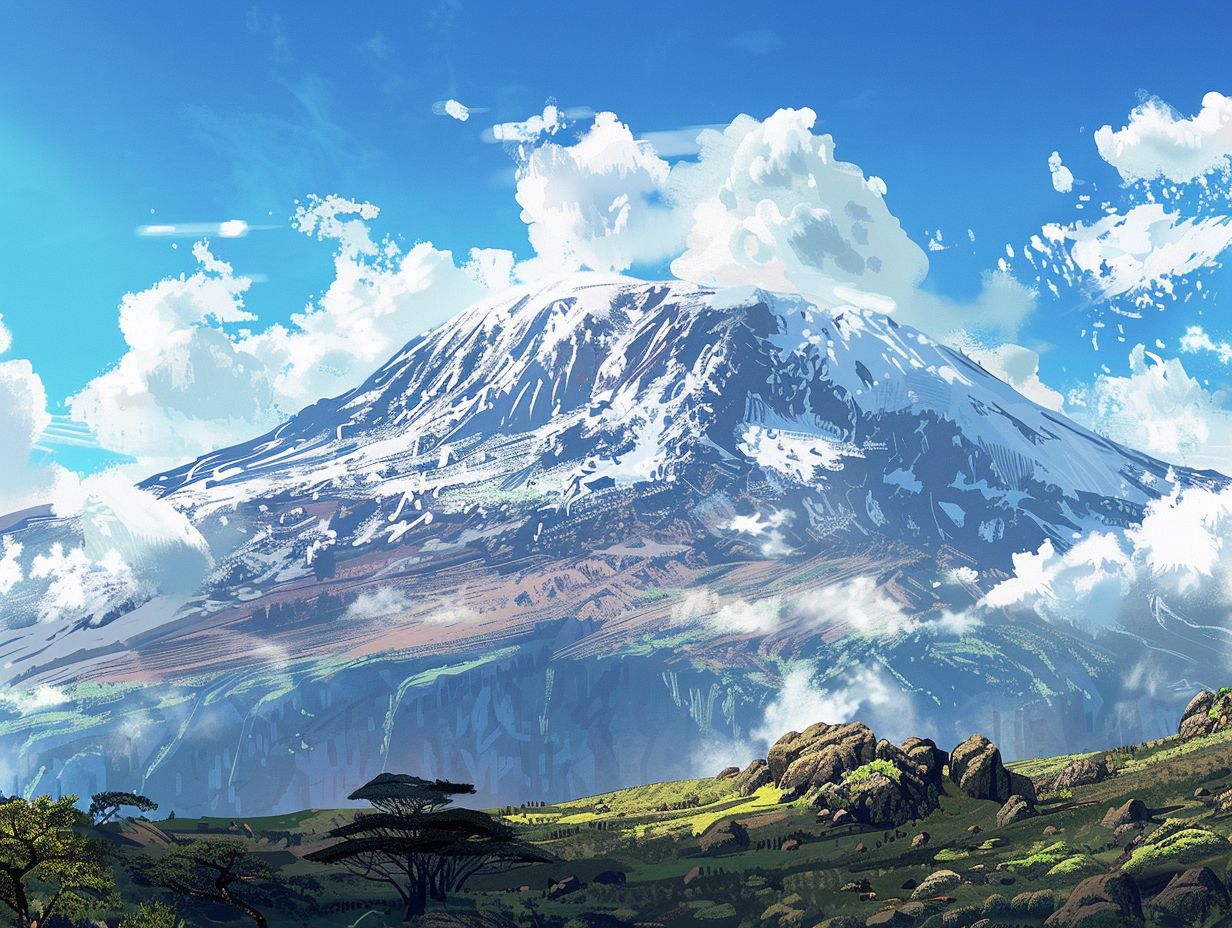
Mount Kilimanjaro is located in Northeast Tanzania and is part of the East Africa Mountains.
Its unique geographic position near the border of Tanzania and Kenya makes it a prominent landmark in the region. Standing majestically at approximately 19,341 feet, Kilimanjaro is the tallest mountain in Africa, attracting adventurers and nature enthusiasts from around the globe.
The mountain is positioned near the iconic Serengeti National Park, known for its vast plains and diverse wildlife. The snow-capped peak of Kilimanjaro provides a stark contrast to the surrounding savannah of the Amboseli National Park in Kenya.
What is the Weather Like in Mount Kilimanjaro?
Mount Kilimanjaro experiences diverse weather conditions due to its varying altitude and ecological zones.
What is the Climate of Mount Kilimanjaro?
The climate of Mount Kilimanjaro varies across its different altitude zones, creating unique ecosystems and biodiversity.
As one ascends the slopes of Mount Kilimanjaro, they will traverse distinct climatic zones characterized by temperature and vegetation changes. Starting at the lush tropical zone near the base, the equatorial rainforest thrives with a lush canopy and diverse flora and fauna.
Transitioning to the montane rainforest zone, temperatures begin to drop, leading to a mix of trees such as towering camphor and fig trees. This zone sustains various animals like colobus monkeys and tree hyraxes among its dense foliage.
Continuing higher, trekkers reach the heath and moorland zone, where giant lobelias and senecios dominate the landscape. These unique plants have adapted to the harsh conditions of this high-altitude zone, where temperature fluctuations and strong winds are common.
What is the Temperature in Mount Kilimanjaro?
The temperature on Mount Kilimanjaro decreases with altitude, leading to significant temperature changes during climbing.
As climbers ascend the majestic slopes of Mount Kilimanjaro, they encounter a remarkable diversity in temperatures. At the base of the mountain, the weather is relatively mild and warm, akin to a typical equatorial climate.
As they climb higher, the thermometer steadily drops—an average decrease of about 1.7°C per every 1,000 feet gained in elevation.
This drastic shift in temperatures can pose a challenge, especially when combined with the effects of altitude on the body.
The drop in temperatures has a direct influence on altitude sickness, a condition caused by reduced oxygen levels at higher elevations.
What is the Humidity in Mount Kilimanjaro?
The humidity levels on Mount Kilimanjaro vary across its ecological zones, influenced by factors such as moisture and vegetation.
As altitude changes along the slopes of the mountain, the humidity levels exhibit a notable shift, creating distinct microclimates. The lower altitudes feature lush rainforests with high humidity due to abundant moisture from rainfall and dense vegetation.
Moving higher, the humidity gradually decreases as the air becomes drier and the vegetation transitions to heath and moorland characterized by hardy plants adapted to lower moisture levels.
Near the summit, the air is significantly drier, and the vegetation is sparse, with permanent glaciers blanketing the upper reaches of Kilimanjaro.
What is the Precipitation in Mount Kilimanjaro?
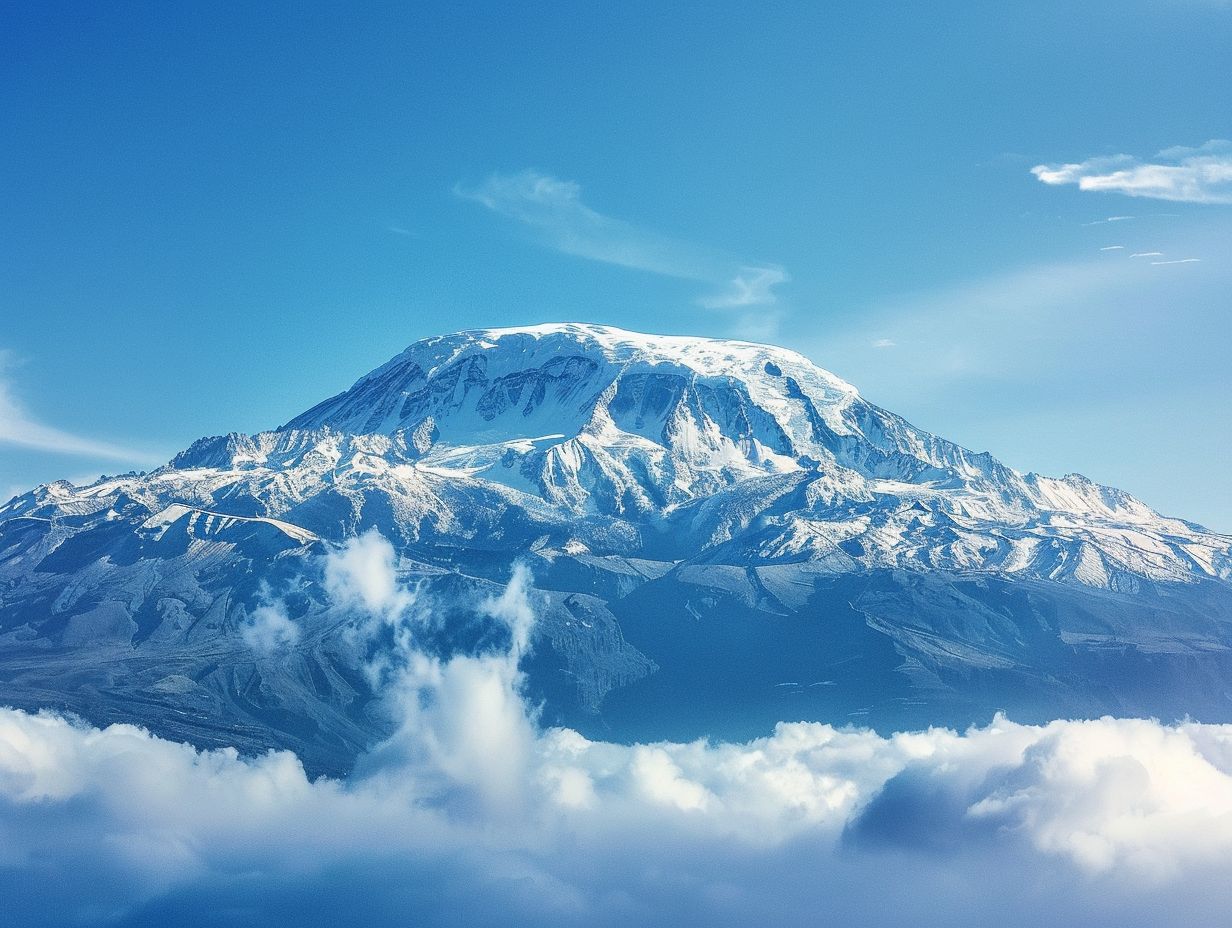
Mount Kilimanjaro receives varying levels of precipitation throughout the year, impacting its weather conditions and ecological diversity.
The precipitation patterns on Mount Kilimanjaro play a crucial role in shaping the unique ecosystem of the region. The mountain experiences distinct wet and dry seasons, with the majority of rainfall occurring during the long rainy season from March to May.
This heavy rainfall not only sustains the dense rainforest on the lower slopes but also contributes to the formation of glaciers at higher altitudes. Conversely, the dry season, typically from June to October, sees significantly reduced precipitation levels, leading to drier conditions and affecting the vegetation types found on the mountain.
What is the Wind Speed in Mount Kilimanjaro?
The wind speed on Mount Kilimanjaro is influenced by trade winds, creating distinct wind patterns across its different altitude zones.
Trade winds, characterized by their persistent strength and consistency play a crucial role in shaping the wind dynamics on Mount Kilimanjaro. As these prevailing winds interact with the mountain’s topography, they undergo various modifications, leading to fluctuations in wind speed and direction.
These variations greatly influence the local climatic conditions, contributing to the diverse microclimates found on the mountain. Due to the impact of trade winds, different vegetation zones have developed along the slopes of Kilimanjaro, each adapted to the specific wind patterns and climate of its respective altitude.
What is the Visibility in Mount Kilimanjaro?
The visibility on Mount Kilimanjaro is affected by cloud cover and weather conditions, impacting the panoramic views and trekking experiences.
Cloud cover plays a crucial role in determining the visibility levels on the majestic Mount Kilimanjaro. When the clouds descend upon the mountain, they can shroud the peaks in mist and obstruct the breathtaking vistas that trekkers hope to witness.
This not only affects the visual appeal of the journey but also adds a layer of mystery and intrigue to the landscape. Varying weather conditions, such as sudden rain showers or thick fog, can further obscure the views, challenging climbers and hikers to navigate through the ever-changing environment.
How Does the Weather Vary on Different Parts of Mount Kilimanjaro?
The weather on Mount Kilimanjaro varies significantly across its different ecological zones, from the Arctic-like conditions at the summit to the tropical climate at the base.
At the roof of Africa, the summit zone of Kilimanjaro experiences freezing temperatures, averaging around -7°C, with fierce winds and snowfalls making it seem like a slice of the Arctic has been transplanted.
On the contrary, as you descend to the lower altitudes, the climate transforms into a lush tropical haven, characterized by warm temperatures, abundant rainfall, and dense vegetation.
When is the Best Time to Visit Mount Kilimanjaro?
The best time to visit Mount Kilimanjaro for climbing is during the dry season when the weather is favorable and the UV index is lower.
What is the Peak Climbing Season for Mount Kilimanjaro?
The peak climbing season for Mount Kilimanjaro is usually during the dry months when the summit zone offers clear skies and stunning sunrise views.
In particular, the optimal climbing window typically falls between June and October, as the weather tends to be more stable reducing the risks of obstacles during the ascent.
This period also aligns with Mount Kilimanjaro’s drier season, making the trails less muddy and slippery, providing a more manageable journey for climbers.
During this season, the crisp air at high altitudes allows for excellent visibility, offering climbers breathtaking panoramic views of the surrounding landscapes and the expansive African plains stretching out below.
The early morning hours showcase nature’s stunning spectacle as the sun rises over the horizon, bathing the summit zone in a warm glow.
What is the Off-Peak Season for Mount Kilimanjaro?
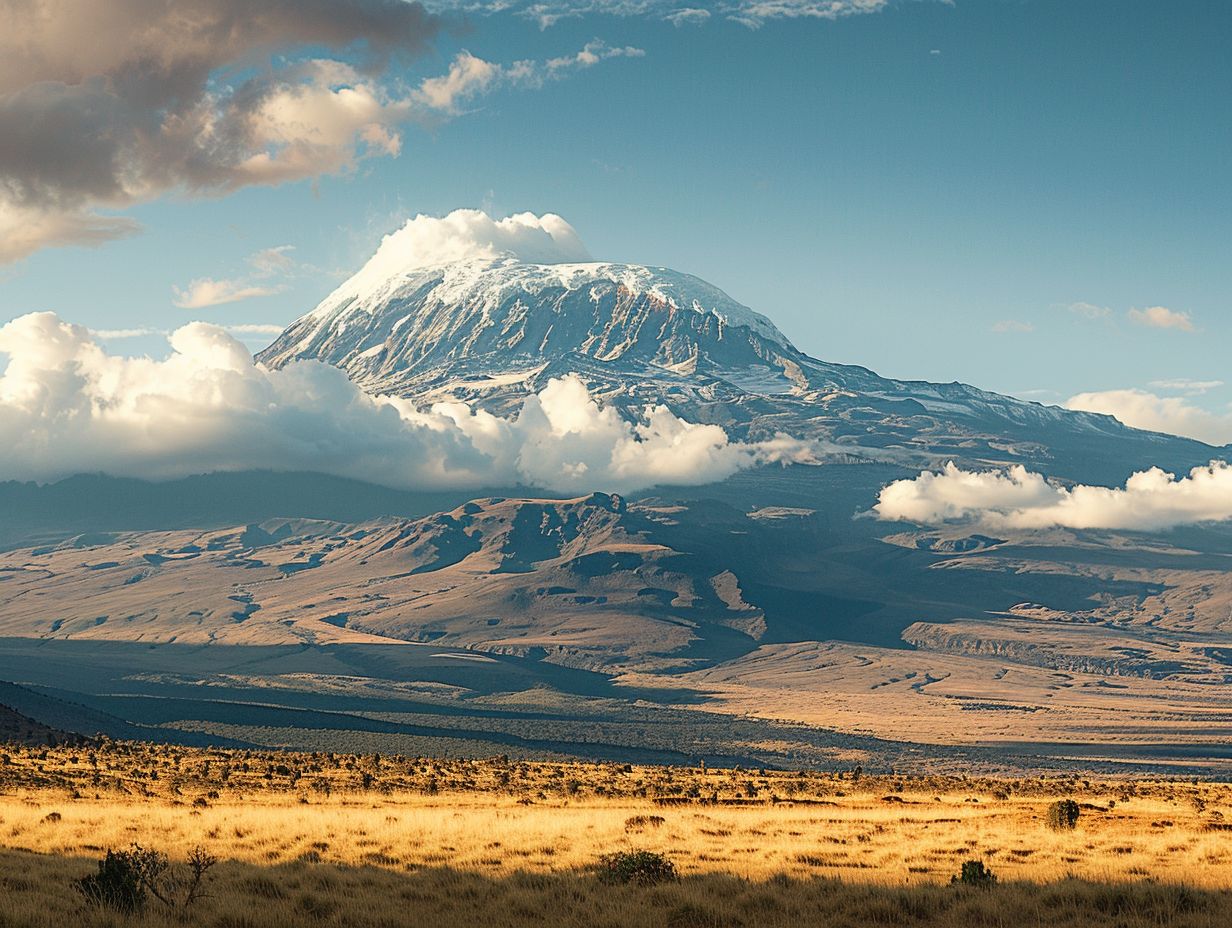
The off-peak season for Mount Kilimanjaro coincides with the rainy months when snowfall may occur at higher elevations, impacting climbing conditions.
During this period, the rain can create slippery and muddy trail making the ascent challenging and potentially dangerous. Extreme caution is advised due to the increased risk of avalanches and rockfall caused by the unstable terrain.
Climbers need to be well-prepared with proper gear to combat the wet and cold conditions. The fluctuating weather patterns demand quick adaptation and resilience, as visibility can decrease dramatically with fog and mist enveloping the mountain.
Consequently, experienced guides and careful planning are crucial during the off-peak season on Mount Kilimanjaro.
What are the Precautions to Take for the Weather in Mount Kilimanjaro?
Taking necessary precautions for the weather on Mount Kilimanjaro is crucial, especially to prevent altitude sickness and ensure a safe climbing experience.
When preparing for the climb, it is imperative to acclimatize gradually to the high altitude. This involves taking it slow, hydrating adequately and listening to your body’s signals. Altitude sickness can be severe, so recognizing its symptoms, such as headache, nausea and dizziness is essential.
Packing appropriate gear, including warm clothing layers, sturdy hiking boots, and a reliable tent, is vital. Proper footwear can prevent injuries and frostbite. It is also advisable to have a knowledgeable guide with you for added safety and guidance.
How to Prepare for the Weather in Mount Kilimanjaro?
Proper preparation for the weather on Mount Kilimanjaro involves familiarizing yourself with the climbing routes and trail conditions for a successful ascent.
Understanding the intricacies of the various climbing routes on Kilimanjaro, such as the Marangu, Machame, or Lemosho routes, is crucial. Each route presents its own challenges and highlights, so climbers must choose wisely based on their experience and preferences.
Checking the latest trail conditions and weather forecasts before embarking on the climb is essential. Proper gear selection, including high-quality insulated clothing, sturdy boots and essential climbing equipment, is equally important for safety and comfort during the ascent. Proper acclimatization and hydration strategies should also be implemented to mitigate altitude sickness risks.
What to Pack for the Weather in Mount Kilimanjaro?
Packing essentials for the weather on Mount Kilimanjaro includes proper gear for sleeping on the mountain and staying comfortable during the climb.
To prepare adequately for the fluctuating weather conditions atop Mount Kilimanjaro, ensuring a good night’s sleep is essential for climbers.
Insulated sleeping bags are crucial to combat the freezing temperatures that can be experienced at higher altitudes, while sleeping pads provide cushioning and insulation from the cold ground.
Additionally, thermal base layers are a must-have to regulate body temperature, while wool socks and gloves keep extremities warm. Packing a headlamp for visibility in the dark and a sleeping bag liner for added warmth can greatly enhance comfort during the night.
Conclusion: Weather in Mount Kilimanjaro and Its Impact on Visitors
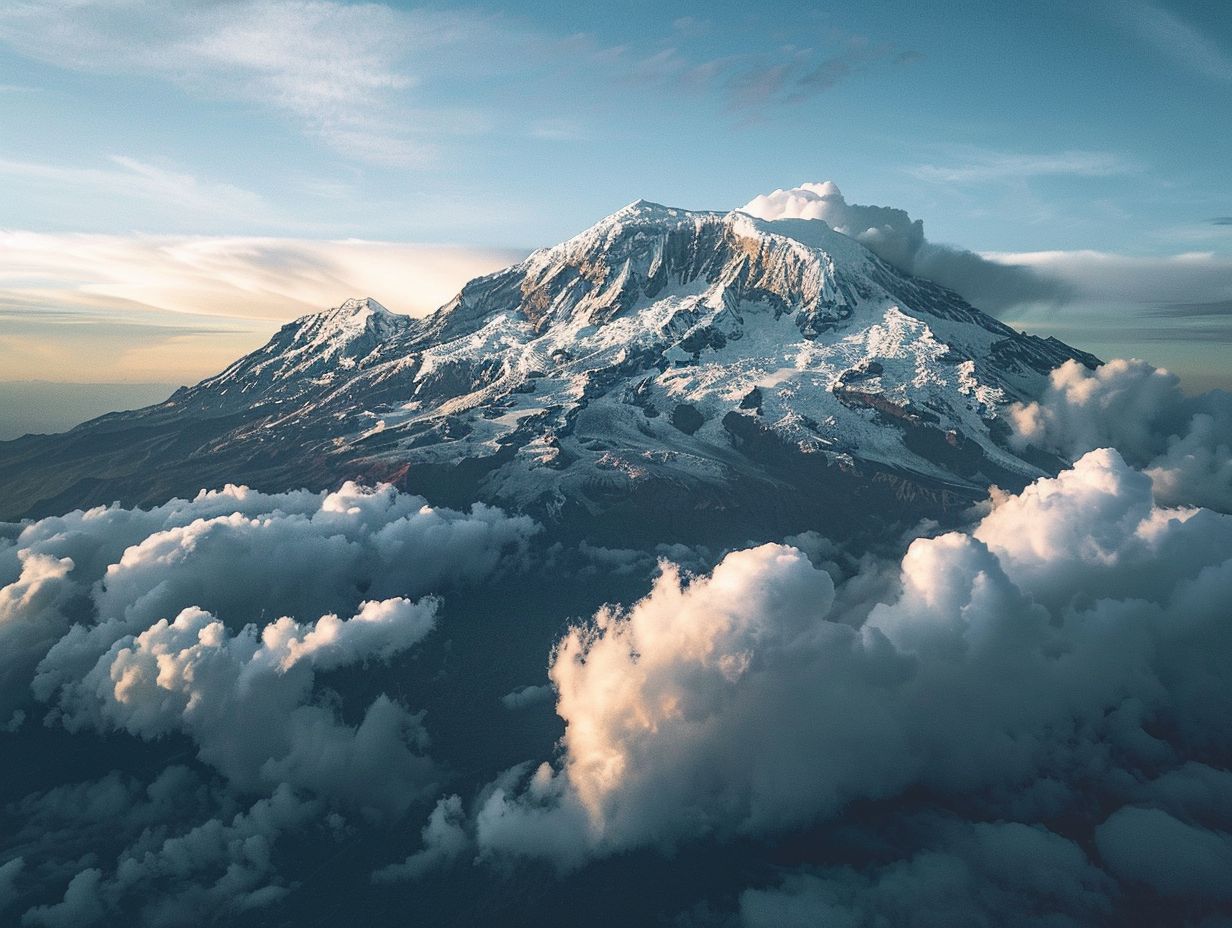
The diverse weather conditions on Mount Kilimanjaro play a significant role in shaping the experience of visitors, from climbers to ecological tour participants.
The weather patterns on Mount Kilimanjaro can shift dramatically between its various climate zones, influencing hikers and tourists alike. The lower slopes boast a lush rainforest ecosystem, whereas the higher elevations experience arctic-like conditions with snow and ice.
These fluctuations challenge climbers and provide a thrilling adventure along the ascen, with sudden weather changes adding an element of unpredictability to the journey.
Seasoned guides are crucial for navigating these diverse conditions, ensuring the safety and enjoyment of all visitors amidst the awe-inspiring natural beauty of the mountain.
Frequently Asked Questions
What is the weather like in Mount Kilimanjaro?
Mount Kilimanjaro has a subtropical climate with temperatures ranging from 70-80 degrees Fahrenheit during the day and dropping to below freezing at night.
What is the best time of year to climb Mount Kilimanjaro?
The best time to climb Mount Kilimanjaro is during the months of January, February, and September when the weather is most stable and there is less chance of rainfall.
Does the weather in Mount Kilimanjaro vary throughout the year?
Yes, the weather in Mount Kilimanjaro can vary greatly throughout the year. The dry season runs from June to October, while the wet season runs from November to May.
What should I pack for the weather in Mount Kilimanjaro?
It is important to pack layers for the changing temperatures on Mount Kilimanjaro. This includes warm clothing for the cold nights and lightweight, breathable clothing for warmer days. It is also essential to bring rain gear for potential rain showers.
Are there any weather-related dangers on Mount Kilimanjaro?
Yes, there are several weather-related dangers on Mount Kilimanjaro, including heavy rain, snow, and strong winds. It is important to be prepared for these conditions and follow the guidance of experienced guides.
Is it possible to predict the weather on Mount Kilimanjaro?
While weather forecasts can give a general idea of the conditions on Mount Kilimanjaro, the weather on the mountain can be unpredictable. It is always best to be prepared for various weather conditions and listen to the advice of experienced guides.